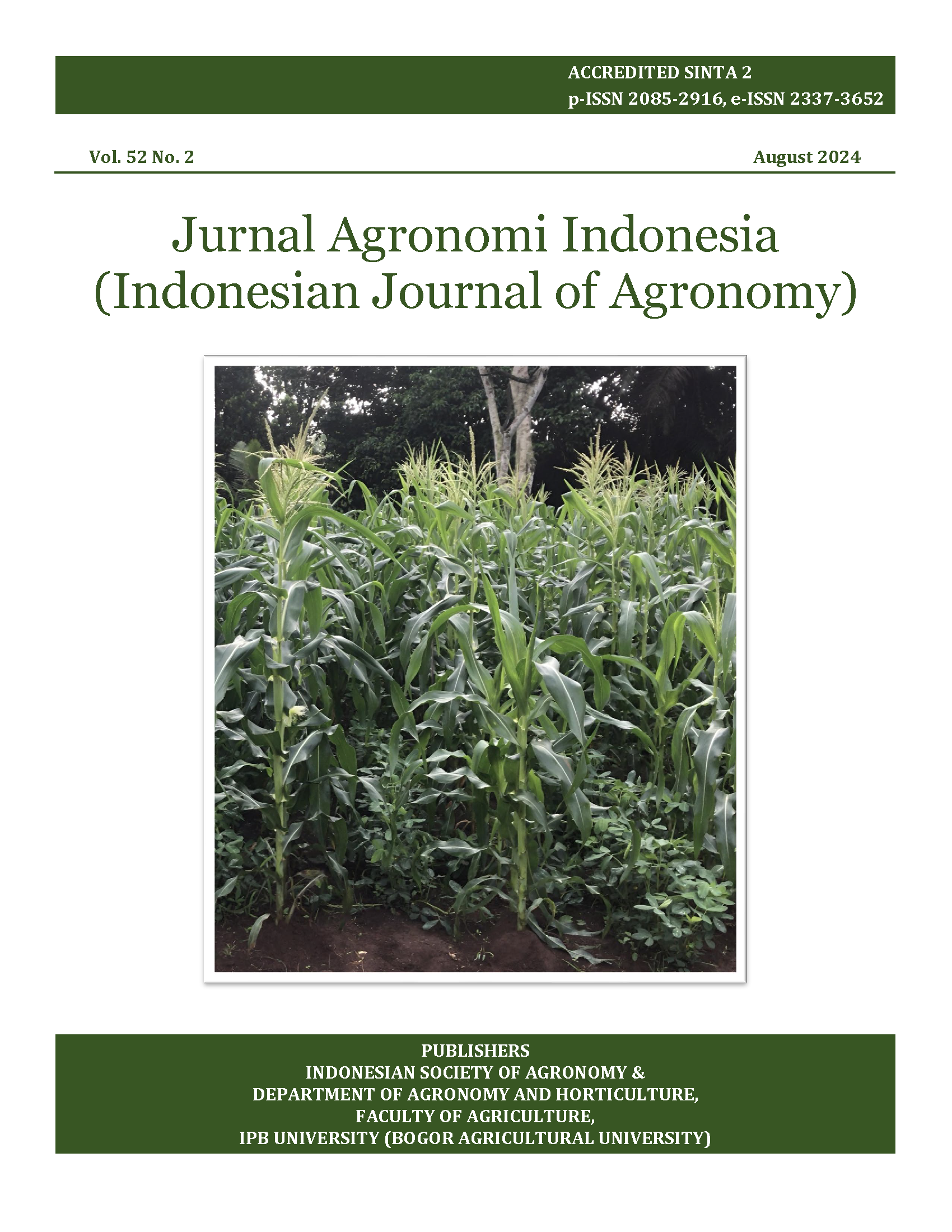Transformation of Ponkan Mandarin (Citrus reticulata Blanco) by CRISPR/Cas-9-gRNA-CsCS to increase plant resistance to huanglongbing disease
Abstract
The gene that regulates callose could be modified by CRISPR/Cas9 technology. This research aimed to insert the CRISPR/Cas9-CsCS gene into Ponkan orange genome using Agrobacterium tumefaciens. The explants were soaked in a bacterial suspension for 20 minutes and incubated for 2-3 days. In vitro acceleration growth was conducted with a two-factor completely randomized design. The first factor is the type of explant with three levels (nucellar embryo, zygotic embryo, cotyledon node), and the second factor is the type of media with 6 levels (VMW, MT, MSK0, MSK1, MSK2, MSK3). The results showed of all explant types, the highest plant height average and number of leaves were obtained in a media combination of MS + Kinetin 2 mg L-1, MT, and MS + Kinetin 3 mg L-1. The highest transformation efficiency was in the nucellar embryo explant, while the highest regeneration efficiency was in the zygotic embryo explant. The highest shoot tip grafting percentage was achieved in the cotyledon node explant at 100%. In the grafting phase, the putative transformants before and after artificial bacterial inoculation showed that Ponkan 606 and Ponkan 597 had the highest plant heights, respectively. The intensity of Huanglongbing attacks after bacterial inoculation showed that three genotypes did not show HLB symptoms in the 24th week of observation, namely genotypes 598, 606, and 607. This study concluded that gene transformation in citrus plants produced three genotypes that did not show HLB symptoms.
Keywords: transgenic; Agrobacterium tumefaciens; Citrus Vein Phloem Degeneration (CVPD)













